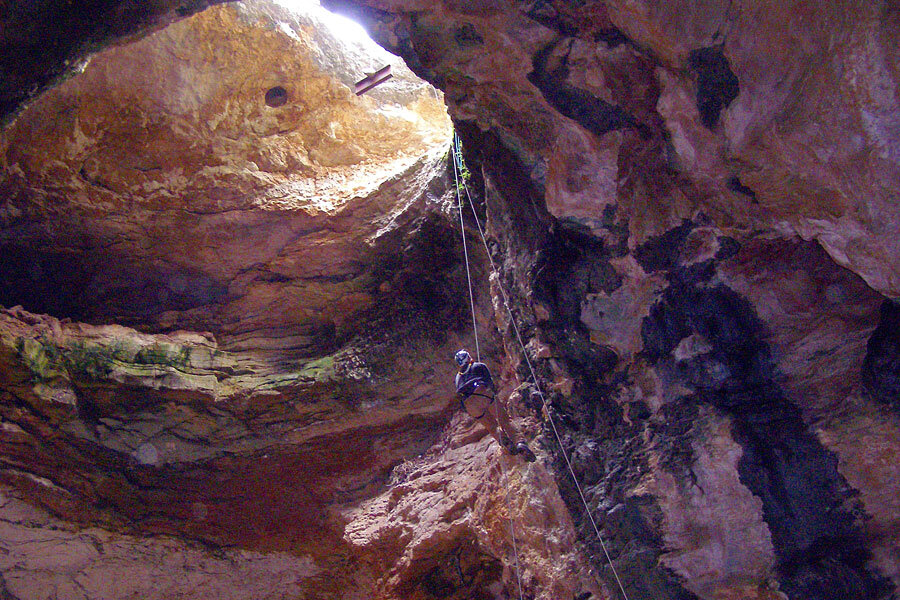Wyoming cave could contain 25,000-year-old lion bones, say scientists
Loading...
| Cheyenne, Wyoming
Paleontologists are completing their first excavation in 30 years inside an unusual U.S. cave thought to hold the remains of tens of thousands of ancient animals that fell to their deaths.
Bones they've found in the Wyoming cave could include those of North American lions, short-faced bears and other now-extinct species from 25,000 years ago.
The cave's only entrance is a hole in the ground that's almost impossible to see until you're next to it. Scientists say over millennia, thousands of unwary animals plummeted 80 feet (24 meters) to their deaths. A metal grate now prevents people and animals from falling in.
"They're very excited about the potential for what they've found," Brent Breithaupt, who was among the exclusive group of scientists who recently rappelled down to excavate the floor of Natural TrapCave, said Wednesday.
The bones lie entombed, layer upon layer, in sediment as much as 30 feet deep.
Scientists hope the cave's high humidity and cool temperatures might even preserve genetic material of extinct animals from the days when massive ice sheets last frosted over much of the North American landscape.
The oldest remains could date back 100,000 years, Breithaupt said
Over the past two weeks, bucket after bucket, the experts have been hauling up bones and bone-bearing sediment.
The best items are being shipped to universities in the U.S. and even overseas, to the Australian Centre for Ancient DNA at the University of Adelaide, Breithaupt said.
"It's an incredible site. It definitely is one of the most significant sites that BLM manages and it will provide very, very important information," said Breithaupt, a paleontologist for the U.S. Bureau of Land Management.
Copyright 2014 The Associated Press. All rights reserved. This material may not be published, broadcast, rewritten or redistributed.







